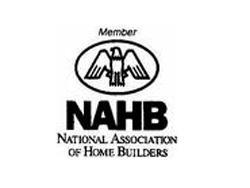Housing Affordability Dropped Slightly in Q2
Washington, DC, August 11, 2017-Rising home prices offset a quarter-point drop in mortgage interest rates to move housing affordability slightly lower in the second quarter of 2017, according to the National Association of Home Builders (NAHB)/Wells Fargo Housing Opportunity Index (HOI).
“While builder confidence remains solid and sales and starts are running at a healthy clip above last year’s levels, housing continues to confront persistent headwinds,” said NAHB chairman Granger MacDonald, a home builder and developer from Kerrville, Texas. “Rising material prices, particularly lumber, along with chronic shortages of buildable lots and skilled labor are putting upward pressure on home prices and impeding a more robust housing recovery.”
“The job market continues to gain steam and this is boosting housing demand,” said NAHB chief economist Robert Dietz. “Meanwhile, growing incomes and attractive mortgage rates are helping to keep housing affordable by partially offsetting ongoing home price appreciation. Home prices will continue to rise as inventory remains tight. NAHB expects the housing market will continue to make gradual gains in 2017.”
In all, 59.4% of new and existing homes sold between the beginning of April and end of June were affordable to families earning the U.S. median income of $68,000. This is down from the 60.3% of homes sold that were affordable to median-income earners in the first quarter.
The national median home price rose to $256,000 in the second quarter from $245,000 in the first quarter of 2017. Meanwhile, average mortgage rates fell 25 basis points in the second quarter to 4.08% from 4.33% in the first quarter.
For the third consecutive quarter, Youngstown-Warren-Boardman, Ohio-Pennsylvania, was rated the nation’s most affordable major housing market. There, 93.3% of all new and existing homes sold in the second quarter were affordable to families earning the area’s median income of $54,600. Meanwhile, Kokomo, Indiana, was rated the nation’s most affordable smaller market for the second straight quarter, with 96.9% of homes sold in the second quarter being affordable to families earning the median income of $62,500.
Rounding out the top five affordable major housing markets in respective order were Syracuse, New York; Dayton, Ohio; Buffalo-Cheektowaga-Niagara Falls, New York; and Scranton-Wilkes Barre-Hazleton, Pennsylvania.
Smaller markets joining Kokomo at the top of the list included Davenport-Moline-Rock Island, Iowa-Illinois; Glen Falls, New York; Watertown-Fort Drum, New York; and Monroe, Michigan.
For the 19th consecutive quarter, San Francisco-Redwood City-South San Francisco, California was the nation’s least affordable major housing market. There, just 7.6% of homes sold in the second quarter were affordable to families earning the area’s median income of $113,100.
Other major metros at the bottom of the affordability chart were located in California. In descending order, they included Los Angeles-Long Beach-Glendale; Anaheim-Santa Ana-Irvine; San Jose-Sunnyvale-Santa Clara; and Santa Rosa.
All five least affordable small housing markets were also in California. At the very bottom of the affordability chart was Salinas, where 12.4% of all new and existing homes sold were affordable to families earning the area’s median income of $63,100.
In descending order, other small markets at the lowest end of the affordability scale included Santa Cruz-Watsonville; San Rafael; Napa; and San Luis Obispo-Paso Robles-Arroyo Grande.
